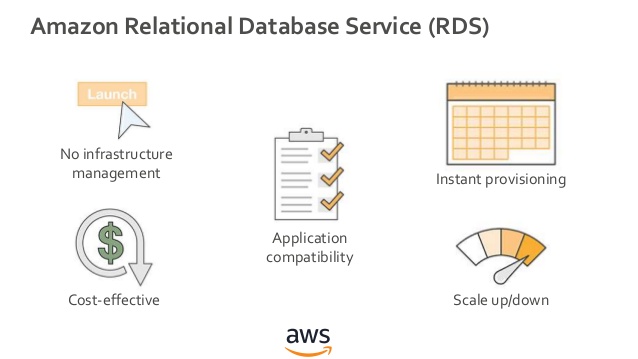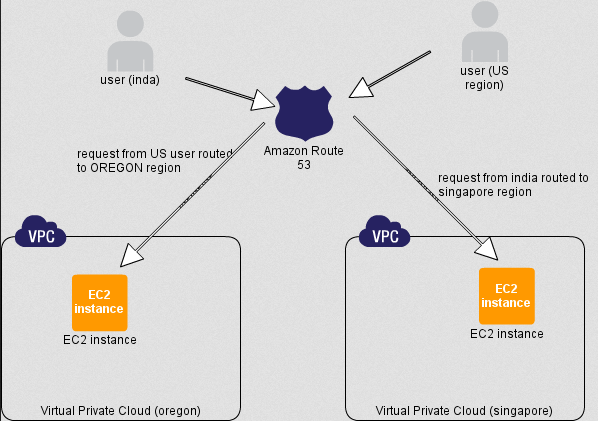Amazon Relational Database Service (RDS)
RDS is a service on separate VPS, optimized for working with the databases.
The following database management systems are available on Amazon RDS:
- MySQL Community Edition
- Oracle Database Standard Edition One
- Oracle Database Standard Edition
- Oracle Database Enterprise Edition

RDS instance disk space can be ordered by the client. The minimum size of a storage is 5 GB.
There is a possibility of flexible settings for server access. Only one address is available. This can be useful, for example, for autoscaling.
You can also configure replication between servers.
RDS supports instant blind (snapshot) and auto-backup, which allows you quickly and accurately recover a data.
RDS will automatically transfer your host to a healthy node.
If there are any updates, DBMSs can be automatically patched and rebooted. Customers are notified in advance.
But there is no root access to the DBMS. The storage capabilities of the built-in procedures and fine-tuning are implemented through the API and command line utilities.
All RDS instances work on a 64 bit platform.
Billing
Same as EC2, RDS is paid for every hour of using the working instance and storage, a separate fee is taken for storing backups and snapshots. The number of I / O operations is also considered.
As well here are Reservations — payments of the all amount on spot for 3-4 months, after which the hourly rate for the instance’s work is reduced for a year or 3.
Route53
Route53 is Amazon’s cloud-based DNS service. Almost the most common name service, characterized by high performance and price. This is actually a cheap service. It has big zones with small TTL and we just pay a real dime for DNS.

One of the main features of Route53 is an integration with other AWS services, such as EC2 and Load balancer, S3, CloudFront.
The load balancer does not have a static address, but has a public DNS name. Using third-party services, we would have to use CNAME to refer to this name, but Route53 has a special type of records for Load balancer – ALIAS. This allows you to use the full functionality of the balancer without propagation.
It is also interesting that you can use WRR (Weighted Round Robin) records that allow you to make a load balancing at the DNS level.
Route53 is managed through the console or command line tools. There are also several third-party services that, let’s say, more clearly than the console, are showing the status of the zones and providing a more convenient setting. When in the console was no possibility to manage Route53, third-party services were very popular, for example, we often used https://interstate53.com for such purposes.
Billing
Payment is made per requests that count by millions.